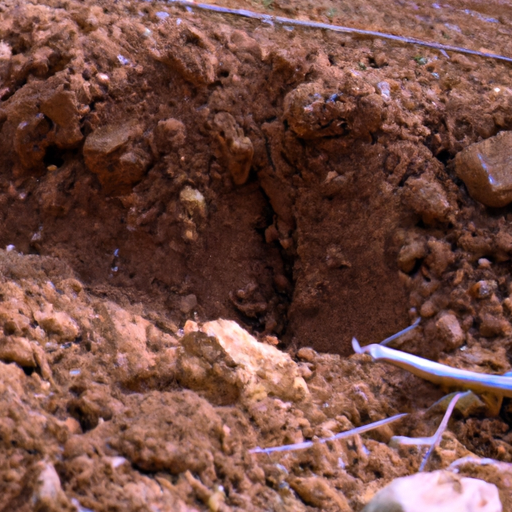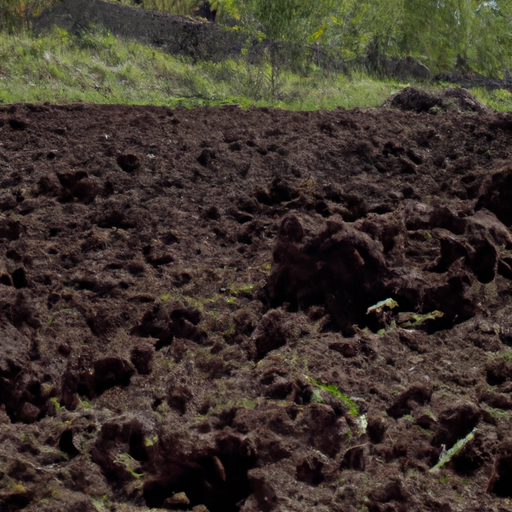
Benefits of Proper Soil Preparation for Planting Grapevines
The success of growing grapevines depends greatly on the preparation of the soil before planting. Proper soil preparation is essential for providing the necessary nutrients and conditions for the grapevines to thrive. By taking the time to prepare the soil correctly, grape growers can ensure healthy and productive vines.
One of the main benefits of proper soil preparation is the improvement of soil structure. Grapevines require well-drained soil that allows for proper root development. By loosening the soil and breaking up any compacted areas, growers can create a favorable environment for the roots to spread and grow. This allows the vines to access water and nutrients more easily, leading to healthier plants.
In addition to improving soil structure, proper soil preparation also helps with nutrient availability. Grapevines require a variety of nutrients to grow and produce high-quality fruit. By incorporating organic matter, such as compost or well-rotted manure, into the soil, growers can increase the nutrient content and improve the soil’s ability to retain moisture. This organic matter also helps to promote beneficial microbial activity in the soil, which further enhances nutrient availability for the grapevines.
Another benefit of soil preparation is the prevention of weed competition. Weeds can compete with grapevines for water, nutrients, and sunlight, which can hinder their growth and productivity. By removing existing weeds and their roots before planting, growers can reduce weed pressure and give the grapevines a better chance to establish themselves. Additionally, the incorporation of organic matter into the soil can help suppress weed growth by creating a more favorable environment for the grapevines compared to the weeds.
Proper soil preparation also plays a role in disease prevention. Grapevines are susceptible to various diseases, such as fungal infections, which can significantly impact their health and productivity. By ensuring good soil drainage and aeration, growers can reduce the risk of waterlogged soil, which can promote the development of fungal diseases. Additionally, incorporating organic matter into the soil can help improve its overall health and resilience, making the grapevines less susceptible to diseases.
Furthermore, proper soil preparation can also contribute to the overall sustainability of grape growing. By improving soil structure and nutrient availability, growers can reduce the need for synthetic fertilizers and pesticides, which can have negative environmental impacts. Healthy soil also promotes biodiversity, as it provides a habitat for beneficial organisms such as earthworms and beneficial insects. These organisms can help control pests and improve soil fertility naturally, reducing the reliance on chemical inputs.
In conclusion, proper soil preparation is crucial for the successful growth of grapevines. By improving soil structure, enhancing nutrient availability, preventing weed competition, reducing disease risk, and promoting sustainability, growers can ensure healthy and productive vines. Taking the time to prepare the soil correctly before planting is an investment that will pay off in the long run, resulting in high-quality grapes and a thriving vineyard.
Steps for Effective Soil Preparation for Grapevine Planting

Soil preparation is a crucial step in the successful planting of grapevines. Properly preparing the soil ensures that the plants have the necessary nutrients, drainage, and structure to thrive. In this article, we will discuss the steps for effective soil preparation for grapevine planting.
The first step in soil preparation is to test the soil. This will help determine its pH level and nutrient content. Grapevines prefer a slightly acidic soil with a pH level between 5.5 and 6.5. If the soil is too acidic or alkaline, it can be amended with lime or sulfur to adjust the pH level. Additionally, the soil test will reveal any nutrient deficiencies, which can be addressed with the appropriate fertilizers.
Once the soil has been tested and any necessary amendments have been made, the next step is to remove any weeds or grass from the planting area. Weeds compete with grapevines for nutrients and water, so it is important to eliminate them before planting. This can be done by hand-pulling or using herbicides, depending on the size of the area.
After removing the weeds, it is time to till the soil. Tilling helps break up compacted soil and improves its structure. It also allows for better root penetration and water drainage. The depth of tilling should be around 12 to 18 inches, depending on the soil type. It is important to avoid over-tilling, as this can damage the soil structure.
Once the soil has been tilled, it is time to add organic matter. Organic matter, such as compost or well-rotted manure, improves soil fertility and structure. It also helps retain moisture and provides a source of nutrients for the grapevines. The organic matter should be spread evenly over the planting area and incorporated into the soil with a rake or tiller.
After adding organic matter, it is important to level the soil. This can be done by raking the soil to remove any bumps or depressions. Leveling the soil ensures that water is distributed evenly and prevents pooling or runoff.
The next step in soil preparation is to create a planting hole for each grapevine. The size of the hole should be large enough to accommodate the root system of the plant. It is important to dig the hole deep enough to allow for proper root development, but not too deep that the plant will be buried too far below the surface.
Once the planting holes have been dug, it is time to plant the grapevines. Carefully place each plant in its respective hole, making sure that the roots are spread out and not cramped. Backfill the hole with soil, gently firming it around the roots. It is important to avoid compacting the soil too much, as this can hinder root growth.
Finally, water the newly planted grapevines thoroughly. This helps settle the soil and ensures that the plants have access to moisture. It is important to water deeply and regularly, especially during the first few weeks after planting.
In conclusion, proper soil preparation is essential for the successful planting of grapevines. By testing the soil, removing weeds, tilling, adding organic matter, leveling the soil, creating planting holes, and watering, you can provide the ideal growing conditions for your grapevines. Taking the time to prepare the soil properly will greatly increase the chances of a healthy and productive vineyard.
Common Mistakes to Avoid in Soil Preparation for Grapevines
Common Mistakes to Avoid in Soil Preparation for Grapevines
When it comes to planting grapevines, proper soil preparation is crucial for their successful growth and development. However, many people make common mistakes that can hinder the health and productivity of these plants. In this article, we will discuss some of these mistakes and provide guidance on how to avoid them.
One of the most common mistakes in soil preparation for grapevines is inadequate soil testing. Before planting grapevines, it is essential to test the soil to determine its pH level, nutrient content, and drainage capacity. This information is vital as it helps you understand the specific needs of grapevines and make necessary amendments to the soil. Without proper testing, you may end up with soil that is either too acidic or alkaline, lacking essential nutrients, or poorly drained, all of which can negatively impact the growth of grapevines.
Another mistake to avoid is improper soil amendment. After conducting soil tests, it is crucial to amend the soil accordingly to create an optimal growing environment for grapevines. Common amendments include adding organic matter, such as compost or well-rotted manure, to improve soil structure and fertility. Additionally, adjusting the pH level by adding lime or sulfur can help create a more suitable environment for grapevines. Failing to amend the soil properly can result in poor nutrient availability, waterlogging, or nutrient imbalances, all of which can stunt the growth of grapevines.
Furthermore, neglecting to remove weeds and grasses from the planting area is another mistake that can have detrimental effects on grapevines. Weeds and grasses compete with grapevines for nutrients, water, and sunlight, which can significantly hinder their growth. Therefore, it is essential to clear the planting area of any existing vegetation before planting grapevines. This can be done by manually removing weeds and grasses or by using herbicides. By eliminating competition, you provide grapevines with a better chance to establish themselves and thrive.
In addition to weed control, proper soil drainage is crucial for the health of grapevines. Poorly drained soil can lead to waterlogging, which can suffocate the roots and cause root rot. To avoid this, it is important to ensure that the planting area has adequate drainage. This can be achieved by incorporating organic matter into the soil to improve its structure and by avoiding areas with heavy clay soils that tend to retain water. Additionally, planting grapevines on raised beds or mounds can help improve drainage and prevent waterlogging.
Lastly, another mistake to avoid is improper spacing between grapevines. Planting grapevines too closely together can lead to overcrowding, which can hinder air circulation and increase the risk of disease. It is important to follow the recommended spacing guidelines for the specific grapevine variety you are planting. This will allow each plant to have enough space to grow and receive adequate sunlight and airflow, promoting healthy growth and reducing the risk of disease.
In conclusion, proper soil preparation is essential for the successful growth and productivity of grapevines. By avoiding common mistakes such as inadequate soil testing, improper soil amendment, neglecting weed control, poor soil drainage, and improper spacing, you can create an optimal growing environment for grapevines. Taking the time to prepare the soil correctly will pay off in the long run, as it will provide grapevines with the necessary conditions to thrive and produce high-quality grapes.






